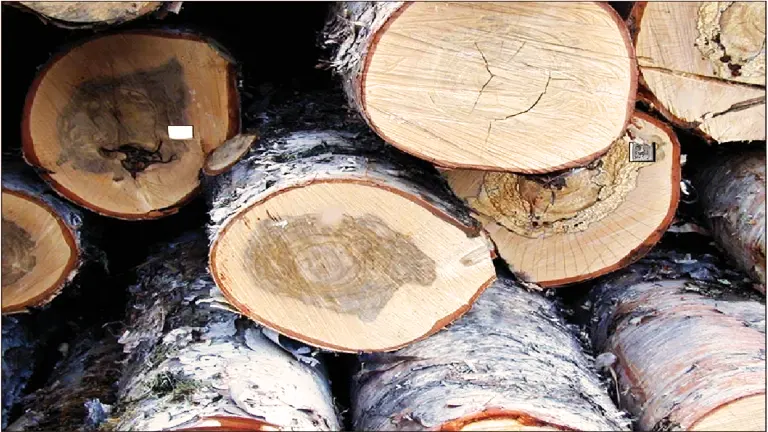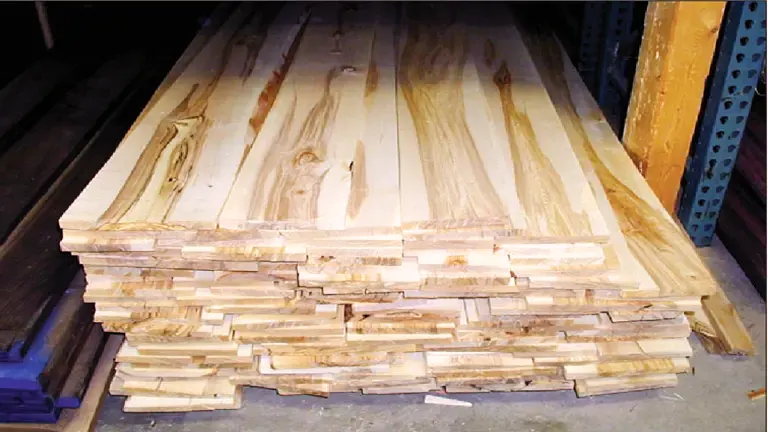Alaska Birch Lumber
- July 27, 2023
- 0 comment
Alaska Birch Lumber, scientifically known as Betula neoalaskana, is a highly prized wood renowned for its exceptional strength and appealing aesthetics. This versatile wood species is a testament to the natural beauty found in the vast wilderness of Alaska. Thriving abundantly in the southeastern and south-central regions of the state, Alaska Birch showcases its splendor through a captivating color palette, ranging from pale to light reddish-brown with contrasting creamy white sapwood.

The lumber is sourced from mature birch trees that attain remarkable heights of 50 to 90 feet and possess diameters measuring 2 to 4 feet. Its straight and even grain pattern, combined with a fine to medium texture, imparts a sense of elegance to finished products, making it a popular choice among woodworkers and artisans.
In addition to its visual allure, Alaska Birch’s mechanical properties contribute to its desirability for various woodworking applications. With an average dried weight of 36 lbs/ft3 and a specific gravity of 0.58, this wood strikes a balance between being strong and yet not overly heavy. Its impressive Janka Hardness rating of 1,260 lbf (5,600 N) ensures resistance to wear and tear, enhancing its durability and lifespan.
| Property | Value |
|---|---|
| Common Name(s) | Alaska Birch |
| Scientific Name | Betula neoalaskana |
| Distribution | Alaska, USA |
| Tree Size | 50-90 ft tall, 2-4 ft diameter |
| Avg. Dried Weight | 36 lbs/ft3 (580 kg/m3) |
| Specific Gravity | 0.58 |
| Janka Hardness | 1,260 lbf (5,600 N) |
| Modulus of Rupture | 14,400 lbf/in2 (99.3 MPa) |
| Elastic Modulus | 1.63 Mpsi (11.24 GPa) |
| Crushing Strength | 7,200 lbf/in2 (49.7 MPa) |
| Shrinkage | Radial: 4.2%, Tangential: 8.4%, Volumetric: 13.7% |
Characteristics
Color/Appearance
Alaska Birch lumber presents a captivating color spectrum, showcasing a pale to light reddish-brown hue, complemented by the presence of creamy white sapwood. This combination of colors creates a delightful contrast, adding to its visual appeal. Additionally, the heartwood of Alaska Birch can sometimes feature darker streaks, imparting a touch of uniqueness and character to finished projects, making it an ideal choice for creating visually stunning pieces.


Grain/Texture
One of the standout characteristics of Alaska Birch is its straight and even grain pattern, which enhances the wood’s overall elegance. The fine to medium texture adds a smooth and refined surface quality to the lumber, further accentuating its aesthetic charm. Whether used for large furniture pieces or intricate carvings, the uniform appearance and consistent grain make Alaska Birch a sought-after material for creating beautifully crafted items.
Rot Resistance
Despite its exceptional strength, Alaska Birch does not possess natural resistance to decay. As such, when employed in outdoor applications, it necessitates appropriate treatment and regular maintenance to enhance its longevity and safeguard it against environmental factors. Utilizing protective coatings and finishes can help preserve the wood’s integrity when exposed to moisture and other elements.
Workability
Alaska Birch stands out as an exceptionally workable wood, catering to the needs of both hand and machine tools. Its favorable machining properties make it a joy to cut and shape, allowing woodworkers to achieve precise and intricate designs with ease. However, as with any wood, care should be taken to prevent tearing the grain during planing, ensuring a flawless finish in the final product.
Odor
A notable advantage of Alaska Birch is its lack of distinctive odor or taste. This feature contributes to its appeal, as it won’t leave any unwanted scents in the finished projects, making it suitable for a wide range of applications, including interior furniture and decorative elements.
Allergies/Toxicity
When it comes to health considerations, Alaska Birch poses no known allergic reactions or toxic effects. Woodworkers and craftsmen can work with this lumber confidently, knowing that it is a safe material to handle without any significant health risks.
Pricing/Availability
Due to its limited distribution and relatively smaller production compared to other birch species, Alaska Birch lumber may not be as readily available as some other wood varieties. As a result, it might be more exclusive and command a higher price in the market. However, its unique characteristics and exceptional quality make it a worthy investment for discerning woodworkers seeking top-notch materials for their projects.
Sustainability
Alaska Birch stands as a testament to responsible forestry practices. Through well-managed harvesting techniques and reforestation efforts, the sustainability of this wood as a natural resource is upheld. By choosing Alaska Birch lumber, craftsmen can contribute to the conservation of this valuable wood species and support environmentally conscious practices.


Common Uses
Alaska Birch finds versatile application in numerous woodworking projects. From crafting high-quality furniture and cabinetry to adding exquisite interior trim and specialty items, this wood is a preferred choice for various artistic endeavors. Its stability and ease of use make it suitable for creating veneers and plywood, further expanding its usability across different industries.
Frequently Asked Question
- Is Alaska Birch lumber suitable for outdoor projects?
Alaska Birch is not naturally resistant to decay, making it less ideal for outdoor use without proper treatment and protection. - How does Alaska Birch compare to other birch species?
Alaska Birch shares many characteristics with other birch species, but its availability might be more limited due to its restricted distribution. - Can Alaska Birch be stained or finished easily?
Yes, Alaska Birch takes stains and finishes well, allowing for customization of its appearance to suit various design preferences. - Is Alaska Birch a sustainable choice for woodworking projects?
Yes, when sourced responsibly, Alaska Birch can be considered a sustainable option, as long as it adheres to ethical logging practices. - Does Alaska Birch have any special woodworking considerations?
Alaska Birch can be prone to tearing when planing, so using sharp tools and proper cutting techniques is advisable.
We’re eager to hear from you! Share your personal experiences and thoughts about Alaska Birch Lumber in the comments section below. Your insights could prove invaluable, assisting fellow woodworkers and enthusiasts in making well-informed decisions when it comes to this remarkable wood!










Leave your comment